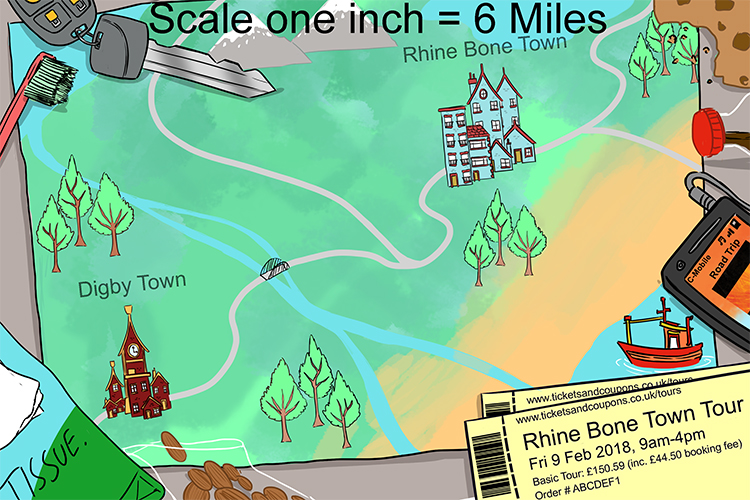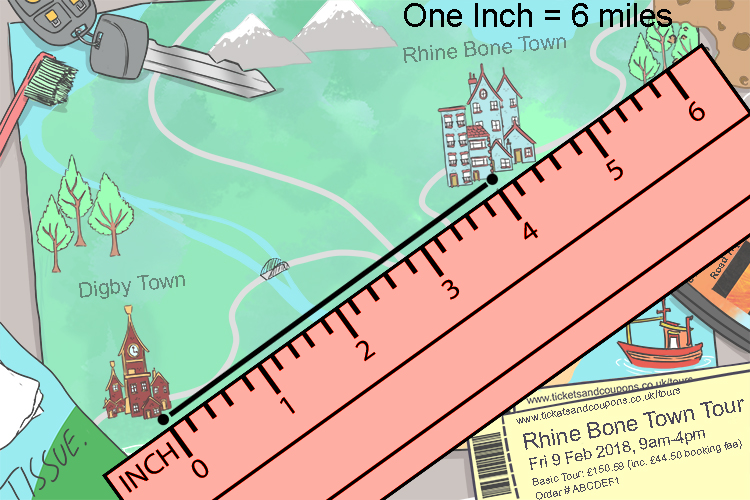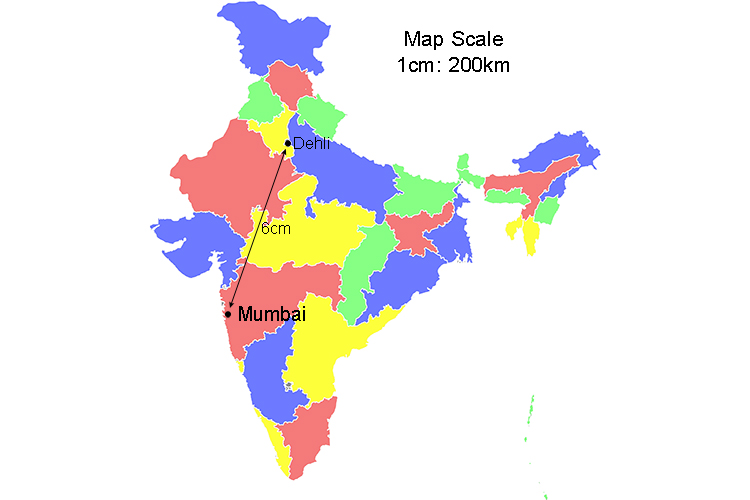Ratios and maps
To further help you remember what ratios are, remember that the most used ratios in the world are maps.
i.e. The scale of a map is a ratio.
To help you remember ratios is associated with maps (and therefore scale) think of the two people raising their toes (ratio) to the holiday they are going to have (see map on the wall).

They raised a toe to everyone (ratio is to every)
because they were going on holiday. Do you see the map?
Example 1
The ratio on a map says that the scale is `1:40,000`
So if a measurement of `3.5cm` between two points is made what is the actual distance?
Answer as follows:
`1:40,000`
is `1` to every `40,000`
so `1cm` to every `40,000cm`
`3.5cm` on the map `=3.5times40,000cm`
`3.5cm` on the map `=140,000cm`
To make this easier we know that `1metre=1000cm` and therefore `140,000cm=140metres`
Answer:
`3.5cm` on the map `=140metres`
Example 2
Given the map below how far is it from Digby town to Rhine Bone town?

So do this first measure with a ruler from Digby town to Rhine Bone town.

You can see that this is `4` inches
One inch to every `6` miles
`4` inches would be `4times6m\i\l\es`
`4times6m\i\l\es=24m\i\l\es`
Answer:
The distance from Digby town to Rhine Bone town is `24\ m\i\l\es`.
Example 3
Find the distance from Delhi to Mumbai in the following map.

We are told that the map is a scale of `1cm:200km`
therefore `6cm` would be `6times200km`
`6times200km=1,200km`
Answer:
The distance from Delhi to Mumbi is `1,200km`




